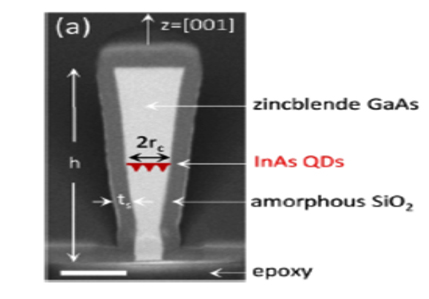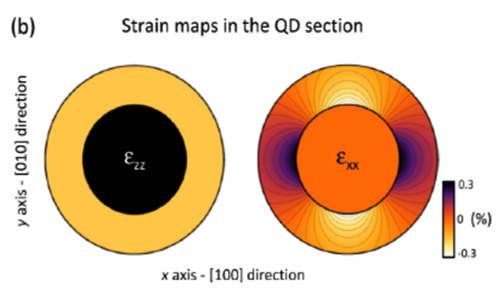It has been shown in recent years that mechanical stress can be used to tune the electronic and optical properties of semiconductor quantum dots. For instance, this approach has been implemented to adjust finely the emission wavelength of quantum dot single photon sources. In view of real applications, it is highly desirable to have all dots responding the same way to a given applied stress. Our team has introduced a novel approach which enables to apply a rigorously identical stress to a collection of quantum dots, so as to test their response homogeneity. Staring from an epitaxial sample containing a plane of quantum dots, we first define 300 nm diameter cylinders by reactive ionic etching, containing few (3 to 10) dots. We deposit next a thin conformal amorphous layer of silica by CVD at high temperature. Because of the difference of the thermal expansion coefficients between the two materials, the silica shell exerts stress on the GaAs core, as well as on the quantum dots it contains. A modelling of the strain tensor at 4K (temperature at which we perform our experiment) shows that the core material experiences a highly uniform strain, and that it is mainly expanded along the cylinder axis. We observe by photoluminescence a very similar emission wavelength shift for all quantum dots, which highlights a very good homogeneity of their response to applied stress. These results open interesting prospects in the fields of nanophotonics and quantum sensing.


a. Scanning electron micrograph obtained for the core-shell structures under study.
b. Maps of the strain field components, as calculated for these structures within the plane containing the quantum dots.